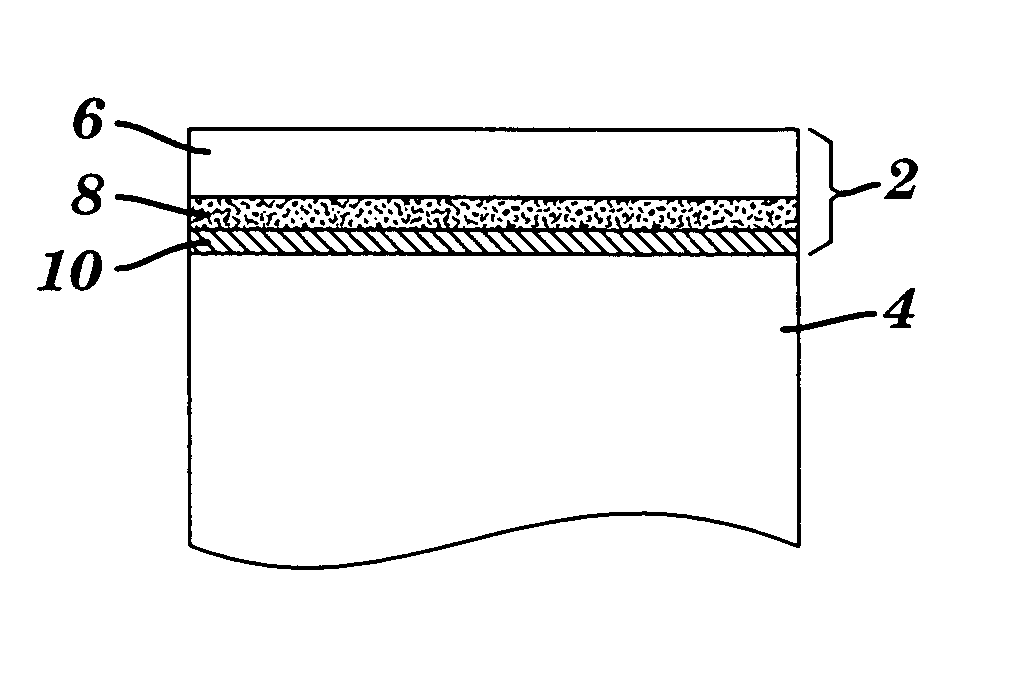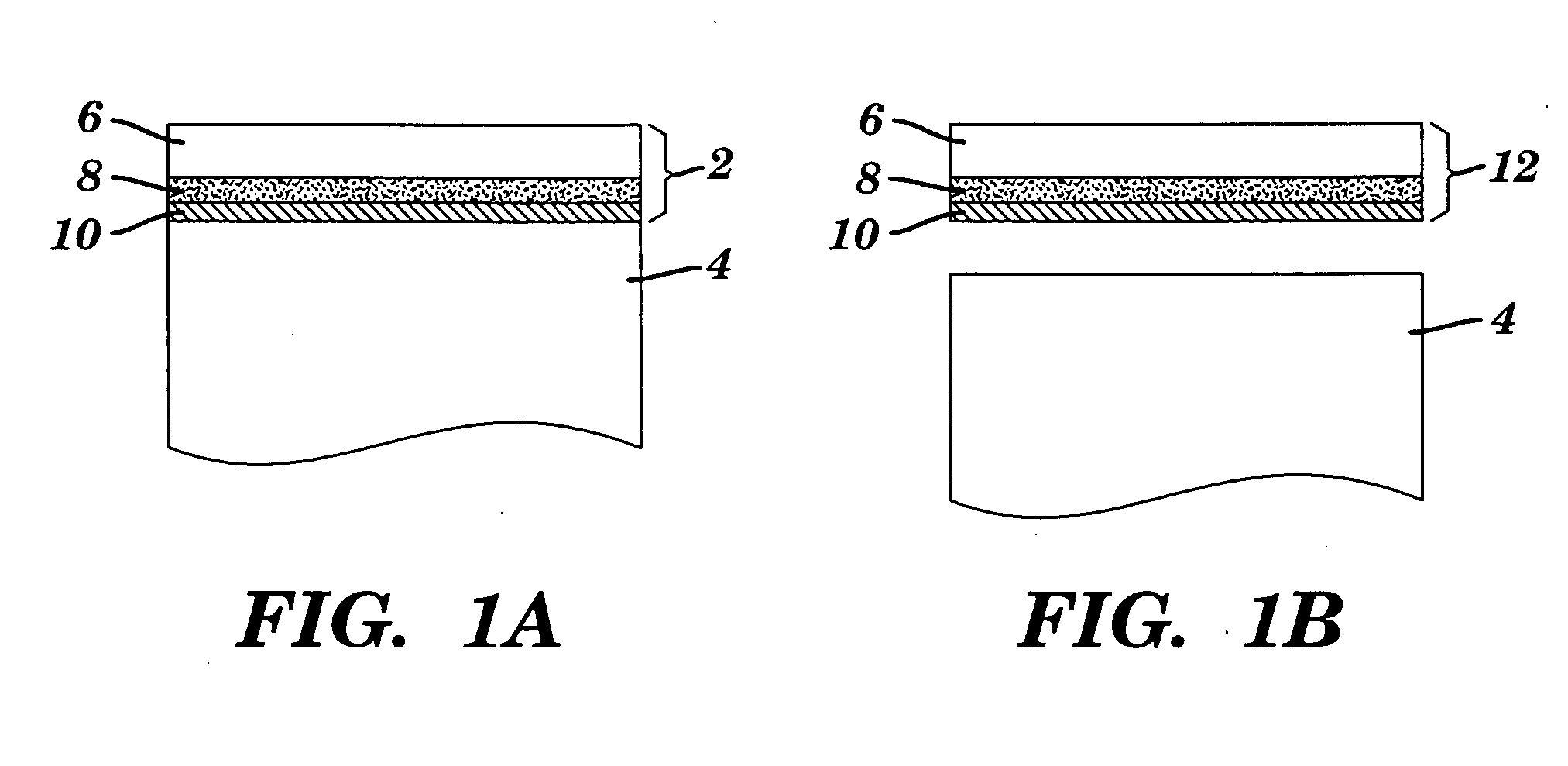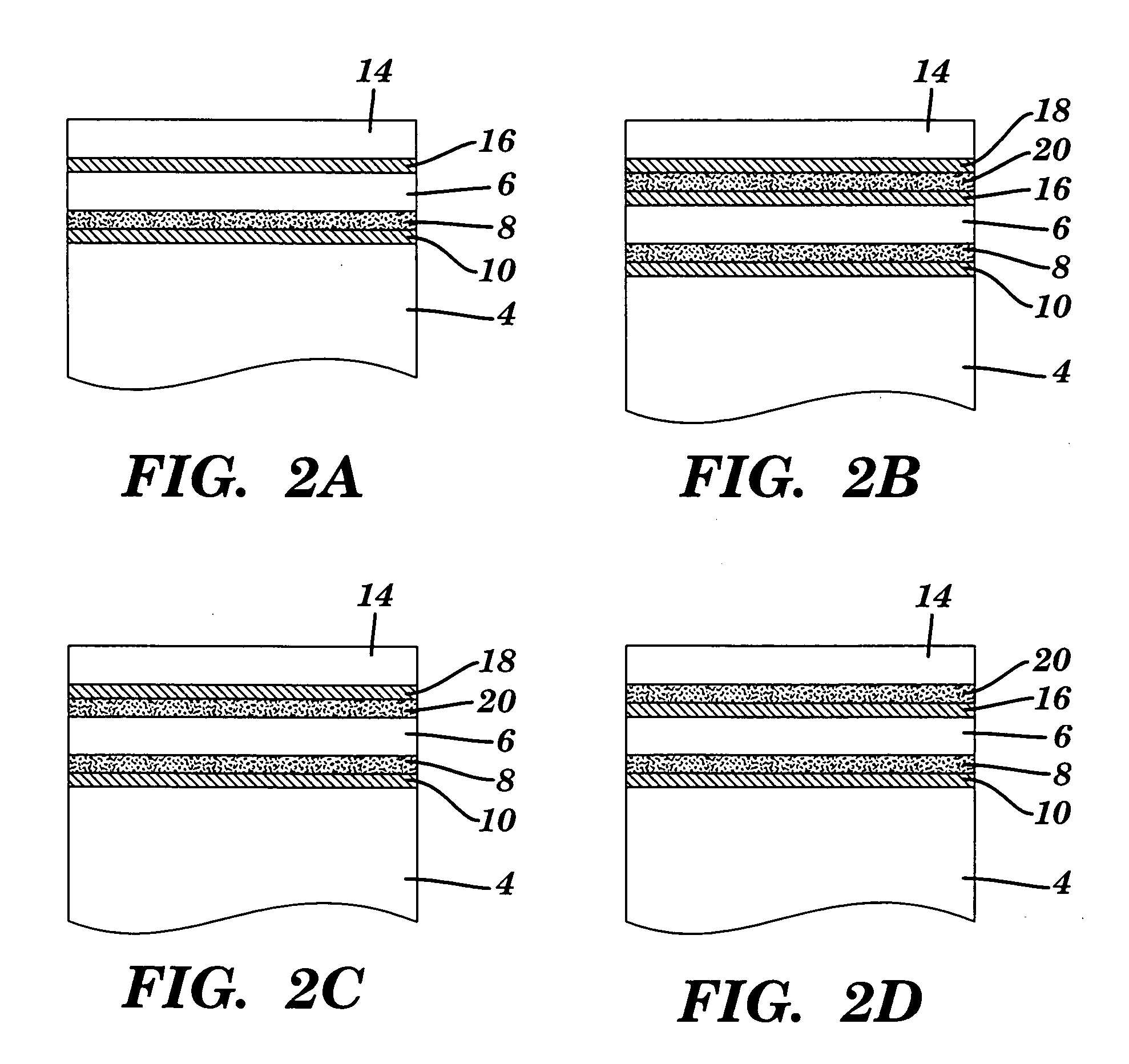Methods and materials for reducing damage from environmental electromagnetic effects
- Summary
- Abstract
- Description
- Claims
- Application Information
AI Technical Summary
Benefits of technology
Problems solved by technology
Method used
Image
Examples
example 1
Lightning Strike Tests: Materials and Methods
[0089] This example sets forth the codes that are used in Examples 2-6.
[0090]“PVDF” is polyvinylidene fluoride (also known as HYLAR™). “5PVDFCU” is 5 mil PVDF with 4 mil acrylic (Adchem 747) adhesive, Astroseal Cu expanded copper foil (Part No. CU 029 CXM C26), and 4 mil acrylic adhesive (Adchem 747). “2PVDFCU” is 2 mil PVDF with 4 mil acrylic (Adchem 747) adhesive, Astroseal Cu expanded copper foil (Part No. CU 029 CXM C26), and 4 mil acrylic adhesive (Adchem 747).
[0091]“MFA” is perfluoroalkoxy fluoropolymer known as HYFLON™. “5MFACU” is 5 mil MFA with 4 mil acrylic (Adchem 747) adhesive, Astroseal Cu expanded copper foil (Part No. CU 029 CXM C26), and 4 mil acrylic adhesive (Adchem 747). “2MFACU” is 2 mil MFA with 4 mil acrylic (Adchem 747) adhesive, Astroseal Cu expanded copper foil (Part No. CU 029 CXM C26), and 4 mil acrylic adhesive (Adchem 747). “5MFA” is 5 mil MFA with 4 mil acrylic (Adchem 747) adhesive. “2MFA” is 2 mil MFA wi...
example 2
Lightning Strike Tests: Test Panels
[0093] Nine carbon composite test panels were laminated with polymer film appliques using a different permutation for each panel. More particularly, Test Panels 1-9 were constructed as follows: [0094] 1. 5PVDFCU [0095] 2. 2PVDFCU [0096] 3. 5PVDF over Cu metallized MFA fabric [0097] 4. 2PVDF over Cu metallized MFA fabric [0098] 5. 5PVDFCU over Cu metallized MFA fabric [0099] 6. 2PVFCU [0100] 7. 2MFACU [0101] 8. 5MFACU [0102] 9. 5MFACU over Cu metallized MFA fabric
In each of test Panels 3-5 and 9, the fabric material was laminated under the 5PVDF, 2PVDF, 5PVDFCU, or 5MFACU such that the fabric was directly laminated onto the carbon composite with the 5PVDF, 2PVDF, 5PVDFCU, or 5MFACU laminated over the MFA metallized fabric.
example 3
Lightning Strike Tests: Test Procedures
[0103] Test panels were tested at Lightning Technologies, Inc. in Pittsfield, Mass. The tests were designed to demonstrate various levels of lightning strike protection capabilities of each tested applique. Each lightning strike applique material showed different levels of lightning strike protection as described below in Tables 3 and 4. Additionally, Tables 3 and 4 list various levels of utility for actual lightning strike protection including a 106 volt dielectric breakdown high voltage test and a Zone 2A high current test including components B, C, and D. All calibrations were performed in accordance with MIL-STD-45662A
[0104] For the high voltage tests, each panel to be tested was positioned horizontally on supports directly beneath a 10 cm diameter spherical electrode connected to the output of a high voltage generator. The air gap between the electrode and the panel surface was set at 0.5 m or 1 m,. All conductive elements were grounded....
PUM
| Property | Measurement | Unit |
|---|---|---|
| Metallic bond | aaaaa | aaaaa |
| Electromagnetism | aaaaa | aaaaa |
Abstract
Description
Claims
Application Information
 Login to View More
Login to View More - R&D
- Intellectual Property
- Life Sciences
- Materials
- Tech Scout
- Unparalleled Data Quality
- Higher Quality Content
- 60% Fewer Hallucinations
Browse by: Latest US Patents, China's latest patents, Technical Efficacy Thesaurus, Application Domain, Technology Topic, Popular Technical Reports.
© 2025 PatSnap. All rights reserved.Legal|Privacy policy|Modern Slavery Act Transparency Statement|Sitemap|About US| Contact US: help@patsnap.com



